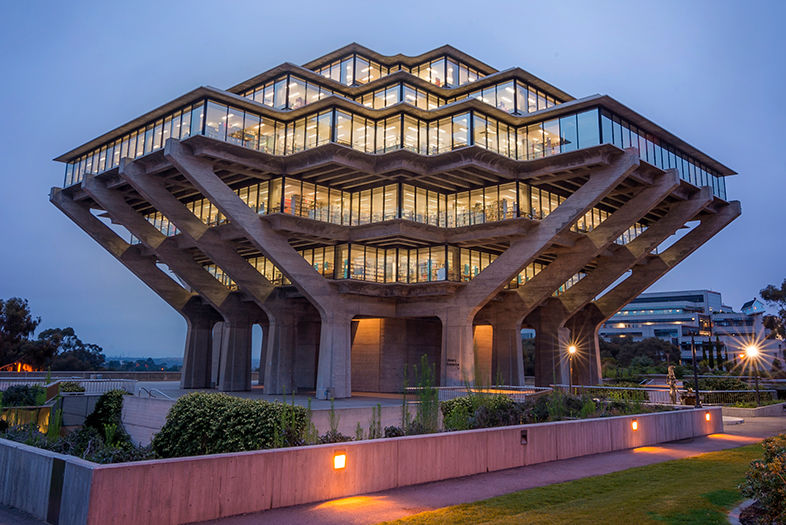
Brutalism is a aesthetic defined by functionality, a form of architecture that shows the raw materials of construction. Brutalist is defined by exposed construction materials, unusually shaped buildings and monochromatic colors. Many of the monumental concrete structures seen all over the world can be attributed to Brutalism, with a strong concentration in former and current communist nations. The term Brutalism is mainly credited to Swedish architect Hans Asplund, who used it in 1949 to describe the Villa Göth, a residential apartment building in Sweden.

Brutalism began after World War II, starting in the United Kingdom before spreading to Europe and the rest of the world. It was an evolution of modernist architecture, delving even deeper into the minimalism aspect. Post WWII many architects were presented with issues in designing and constructing new building, chief among them being a lack of resources. This is a prominent reason for the use of exposed materials and lack of unnecessary decoration. New architects also sought to create monumental structures through a combination of functionalism and modernism, focusing on showing materials and simplicity and rejecting ornamental architecture. It was an attempt to capture the beauty of unadorned materials, creating raw architecture.
One of the earliest example that majorly influenced the style of Brutalism was Cité Radieuse, a working class housing project designed by architect Le Corbusier. The outside of the building is entirely concrete, and it has a majorly utilitarian appearance.

Brutalism follows the philosophy that a building should prioritize functionality and purpose. This purpose is often tied to socialist ideas, with many of the early brutalist projects being affordable housing projects, or public buildings such as government building, libraries, parking garages etc. Many early brutalist projects were attempting to solve modern problems through the use of architecture.
Brutalism was a very popular architectural style for several decades, but began to fade from popularity in the 1980s. Many began to regard the concrete structure as austere and alienating, something not suitable for humans to be in. Much of the concrete used in construction deteriorated internally, causing water damage and causing it to crumble. Many of the buildings were also neglected and heavily vandalized, making the buildings unpleasant to look at. There was also a large connection between brutalism and the Soviet Union, making it even more unfavorable for Wester Europe and the U.S.A. Brutalism is still referenced today though, appearing in residential homes and product design.
I chose to discuss Brutalism because I had a huge change of opinion on the aesthetic. Having not seen much Brutalist architecture as a kid I had initially thought it be ugly and cold, not suitable for humans as said before. Seeing these massive buildings in person changed my mind however. The size and shape of these concrete structures makes them into monuments, massive structure with intriguing design. The show of materials also makes them massively interesting to study. One of my favorite Brutalist structures, and one that heavily influenced my change of opinion on them, is the UC San Diego Library. Named the Geisel Library after the donations of Audrey and Theodor Geisel, also known as Dr. Seuss, it was designed in the 1960s by architect William Pereira. It is one of the most interesting buildings I have ever seen, and a great example of Brutalism.



Sources:
McLaughlin, Katherine. “Brutalist Architecture: Everything You Need to Know.” Architectural Digest, 12 July 2023, www.architecturaldigest.com/story/brutalist-architecture-101.
Hohenadel, Kristin. “What Is Brutalism?” The Spruce, The Spruce, 8 Sept. 2023, www.thespruce.com/what-is-brutalism-4796578.
“About Geisel Library.” The Library, University of California San Diego, library.ucsd.edu/about/geisel-library.html.


4 Comments. Leave new
Hey Garrett, I really enjoy your view on brutalism. It is a very common view for most people to dislike this type of style although the change in opinion you make adds a nice touch and makes your post more engaging. It would be nice to read about how how brutalism is referenced in the evolution of residential homes and what strengths there may be for doing so. Although, as a whole your post was definitely one of the ones I enjoyed the most while reading as it took a new perspective that I personally never understood.
Thanks for the comment Kyle! It took me sometime to appreciate Brutalism, but I think it is one of the most interesting aesthetics to come out of the second half of the 20th century.
Hey Garrett, I am utterly fascinated by your passion for brutalism. It is interesting to me that Brutalism was actually created in the West, I always thought that it started behind the iron curtain. As I drive by the engineering center everyday I often ask myself, “who would ever think of a design like this?”. The use of concrete in design is very unique and I think it brings a level of depth to the building in question. Also, it is very interesting how constant brutalism is throughout the world we live in. You can look at a Brutalist building in Eastern Russia and a brutalist building in downtown San Francisco and they could look almost identical. In addition, these buildings have pull a weight of history along with them. A large population of the world was trapped in brutalist building blocs for over 80 years, and I think this add’s to the intensity of brutalism.
Thanks for the comment Alex! I also ponder the design of the engineering center commonly, but I do appreciate a large amount of the brutalist aesthetics tied to it.